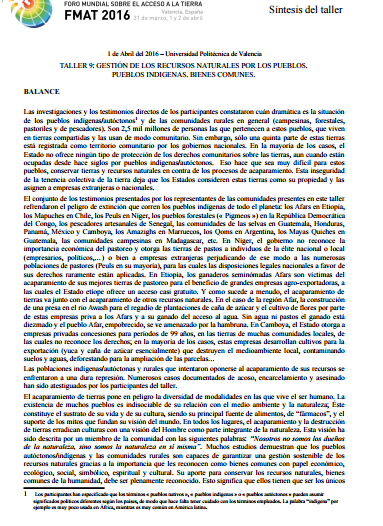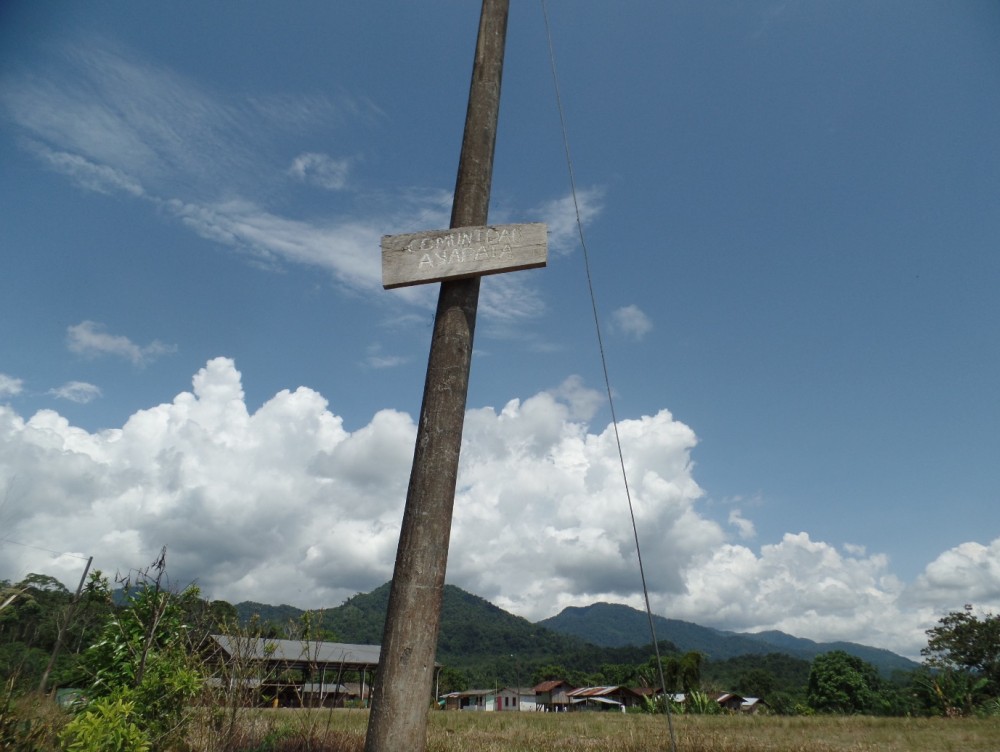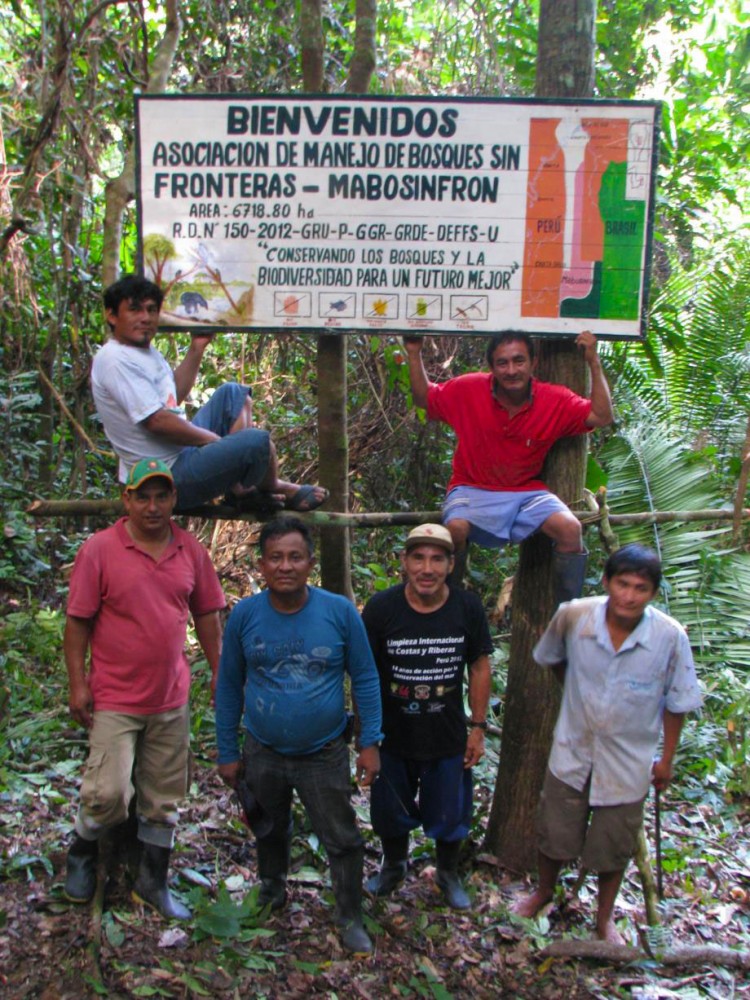TALLER 9: GESTIÓN DE LOS RECURSOS NATURALES POR LOS PUEBLOS. PUEBLOS INDIGENAS. BIENES COMUNES.
Las investigaciones y los testimonios directos de los participantes constataron cuán dramática es la situación de los pueblos indígenas/autóctonos y de las comunidades rurales en general (campesinas, forestales, pastoriles y de pescadores). Son 2,5 mil millones de personas las que pertenecen a estos pueblos, que viven en tierras compartidas y las usan de modo comunitario. Sin embargo, sólo una quinta parte de estas tierras está registrada como territorio comunitario por los gobiernos nacionales.










